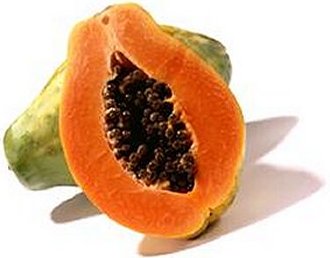Sandbox 31
From Proteopedia
| Line 26: | Line 26: | ||
| - | ==Inhibitors== | + | ==Inhibitors== |
| - | There are many inhibitors of cysteine proteases like papain including antipain, cystatin, Hg2+, and Leupeptin. Leupeptin is a commonly studied inhibitor of proteases. It inhibits by binding and interacting with the active site which allows it to block the enzyme's desired protein substrate. There are many <scene name='Sandbox_31/1popligand_contacts/1'>Residues</scene> that interact with Leupeptin in the active site. The predominant interaction is from hydrophobic interactions between Leupeptin and <scene name='Sandbox_31/1pophydrointeract/1'>active site residues</scene>. | + | There are many inhibitors of cysteine proteases like papain including antipain, cystatin, Hg2+, and Leupeptin. Leupeptin is a commonly studied inhibitor of proteases. It inhibits by binding and interacting with the active site which allows it to block the enzyme's desired protein substrate. There are many <scene name='Sandbox_31/1popligand_contacts/1'>Residues</scene> that interact with Leupeptin in the active site. The predominant interaction is from hydrophobic interactions between Leupeptin and <scene name='Sandbox_31/1pophydrointeract/1'>active site residues</scene>. In addition to hydrophobic interactions, there are also some hydrogen bonding interactions to hold Leupeptin in the active site of papain. Leupeptin works well at blocking papain from its enzymatic duties. |
| - | + | ||
<scene name='Sandbox_31/1pophydrointeract/1'>Hydrophobic Interactions</scene> | <scene name='Sandbox_31/1pophydrointeract/1'>Hydrophobic Interactions</scene> | ||
Revision as of 05:06, 14 November 2011
>
| Please do NOT make changes to this Sandbox. Sandboxes 30-60 are reserved for use by Biochemistry 410 & 412 at Messiah College taught by Dr. Hannah Tims during Fall 2012 and Spring 2013. |
Papain (PDB ID #: 9pap)
| |||||||||||
Active Site and Mechanism
The active site of papain has a including CYS 25, HIS 159, and ASN 175.
(Active Site of Papain) Image:Papain2.jpg
This triad interacts with the substrate to catalyze the reaction. The sulfur from CYS 25 attacks the backbone amine on the substrate forming a tetrahedral intermediate. Next, the carbonyl is reformed and the carbon nitrogen bond is broken. A water associated with a nitrogen on HIS 159 then attacks the carbonyl forming a second tetrahedral intermediate. The carbonyl then reforms breaking the carbon-sulfur bond. This leaves a carboxy group on the end of one piece of the substrate and an amino group on the end of the other piece.
(Mechanism of the Papain Enzyme with substrate) Image:Mech.jpg
References
http://dailyfitnessmagz.com/2011/03/papayas-nutrition-facts/ http://www.sigmaaldrich.com/life-science/metabolomics/enzyme-explorer/analytical-enzymes/papain.html http://peds.oxfordjournals.org/content/7/1/75.abstract http://www.pdb.org/pdb/explore/remediatedSequence.do?structureId=9PAP http://faculty.csusm.edu/lcohen/index.html

